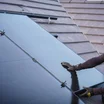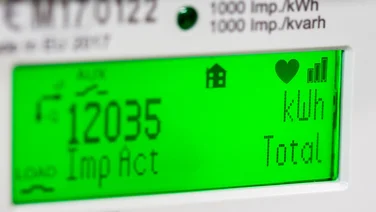- Toyoda Gosei has been testing the vests in Osaka, Japan, and said the technology is a “world first”
- The technology has so far achieved a 21% efficiency rating
- They come with a mobile battery for storing energy

Toyoda Gosei, part of Japanese car giant Toyota, has developed ultra-thin, flexible solar cell vests that are so small and light they can be worn as utility vests.
Unveiled at Expo 2025, which runs from April to October 2025, in the Japanese city of Osaka, the flexible solar panels are lighter than a single sheet of paper and weigh just 4g. They can be used to keep the wearer cool as they can power neck fans.
Worried about the upfront costs of solar panels and other low-carbon technologies? Take a look at our government grants guide to see what’s available to help relieve some of these costs.
Described as a world first by Shinichiro Fuki, general management of development, Toyoda Gosei, the solar cells are not like the silicon solar panels that account 98% of the global solar technology market.

Get solar panel quotes
Answer a few quick questions, and our trusted installers will send you bespoke, no obligation solar panel quotes – for free.
Instead, they are made of perovskite solar cells, which are lighter, cheaper and can absorb more light, including visible and infrared. Fuki even goes as far to say they can be charged in the shade and in the rain.
Made in collaboration with solar cell technology startup, Enecoat Technologies and textile manufacturer Seiren, the film has so far achieved a 21.1% efficiency rate in lab tests, which allows around a fifth of the solar energy it receives to be turned into energy.
It is now being tested in real-world conditions in Osaka and developers are looking at how they respond to different climate conditions and temperatures, as well as the solar battery it is connected to, which takes five-to-10 years to charge.
In a statement from earlier in the year when the technology was first unveiled, Toyoda Gosei said it can be used for functions such as health management. The cells use high-frequency power source technology to “develop a power control unit that can store electricity”.
The partners developed what they call a “technology for attaching solar cells to clothing without wiring” using Seiren’s “sewing technology”.






